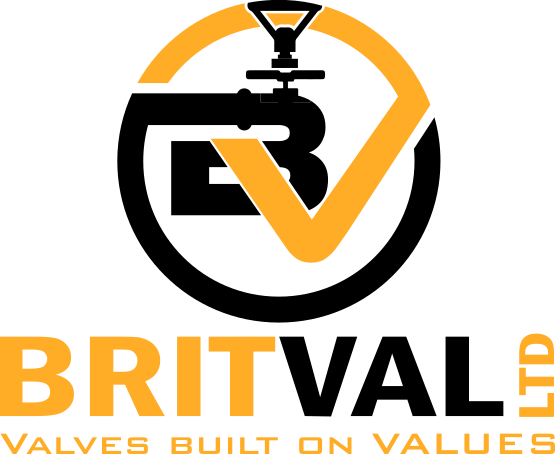Trunnion Ball Valve
Trunnion Ball Valves - API 6D
Full & Reduced Port
Bolted Body Construction
Classes: 150 - 2500
Sizes: 2" - 48"
Britval offers its client a wide range of trunnion Ball valves in sizes upto 48 inches in 150 class to 2500 class . The valves can be offered in various body materials , trims with actuator options to meet any critical needs of the client from the energy industry .
All our valves are manufactured to meet the specications of API6D . The valves are also certified to firesafe design . Our state of the art facility which comprises of the latest CNC machines produce a flawless piece of workmanship at very competitive grounds.
All our valves are designed using state of the art design and analysis software . Our carefully drafted stringent quality standards ensures that the designs are converted into a highly reliable product .


Trunnion Mounted Ball Valve Construction
Trunnion mounted ball valves have a similar structure as traditional ball valves. The only difference is that trunnion ball valves have additional mechanical anchoring that supports the ball or disk. In this design, the ball is supported from both ends on the x-axis, so that it stays in place and is easy to control. Here is a look at the different parts of a trunnion-mounted ball valve.

Types of Trunnion Mounted Ball Valves
Trunnion mounted ball valves are available in many different configurations. They are highly customizable so you can choose the size, type, and actuator that suits your needs.
1. Based on Body Configuration
There are two types of trunnion mounted ball valves based on body configuration.
a. Top Entry Trunnion Mounted Ball Valve
This type of ball valve has a removable bonnet cover on the top of the valve. The internal parts of the valve can be easily accessed by removing the bonnet.
These valves are easy to assemble and disassemble. You can repair or maintain different parts of the trunnion valve without removing it from the pipeline.

b. Side Entry Trunnion Mounted Ball Valve
Side entry ball valves are also known as split body trunnion mounted ball valves. In these valves, the body is divided into two or three pieces that are bolted together like flanges.

2. Based on Bores
The bore of the valve is the hole that is found in the middle of the disk or ball. Trunnion mounted ball valves have two types based on bore size.
a. Full Port Trunnion Mounted Ball Valves
• In full bore valves, the size of the diameter of the bore matches that of the connected pipeline. When the valve is open, the medium can flow freely without restriction through the bore.
• This type of ball valve is used in chemical, petrochemical, and refining industries. They are also used in applications where pigging is required.
b. Reduced Port Trunnion Mounted Ball Valve
• A half port trunnion valve has a bore size that is a few nominal sizes less than the diameter of the connected pipeline.
• Half port valves are mostly used in the oil and gas industry.
3. Based on Assembly
The body of the valve may have one, two, or three pieces connected together though welded joints. There are two types of trunnion mounted ball valves based on the number of pieces.
a. Two-Piece Trunnion Mounted Ball Valve
• This valve features two pieces of housing that are connected to each other through threaded connections.
• It is easy to open up one piece of housing to access the valve for cleaning or repair.

b. Three-Piece Trunnion Mounted Ball Valve
• Three-piece trunnion mounted ball valves go one step ahead of the two-piece design.
• Ease of maintenance from either side.

Ease of Operation
• Any added pressure on the valve is absorbed by the trunnion and the stem. This means the valve needs a lower operating torque and a smaller actuator. This reduces costs and makes it easier to operate the valve.
• Three-piece trunnion mounted ball valves are also easy to repair, clean, replace, and maintain as you only have to remove one piece to access the working parts of the valve.
Double Block and Bleed Capabilities
You can use multiple trunnions mounted ball valves to make a double block and bleed valve. Or add a bleed body to a two-piece or three-piece trunnion ball valve to help improve its sealing abilities. The double block and bleed function makes it possible to flush the valve under pressure and verify that the seats are sealing properly.
Trunnion Vs. Floating Ball Valve
Pros
• Less torque: Trunnion mounted ball valves do not require much torque forces to operate, unlike floating ball valves that rely on torque.
• Versatile: Trunnion mounted ball valves are versatile, meaning that they can be used for both small-scale domestic applications as well as large-scale manufacturing operations
• No friction: Trunnion ball valves provide little to no friction and pressure on the walls, preventing compartmental depletion
• Full sealing: Trunnion ball valves secure the openings fully
Cons
• Expensive maintenance: As Trunnion ball valves are strongly joined together through the welding process, their maintenance and repair can be an expensive ordeal. Ball valve trunnion mounted can also be difficult to put them back together once broken. Hence, they disturb the normal manufacturing process.
• Obligatory repairs: Sacrificing maintenance can decrease the quality of its working by increasing the degree of friction. As trunnion ball valves are welded together, regular maintenance is a must.
